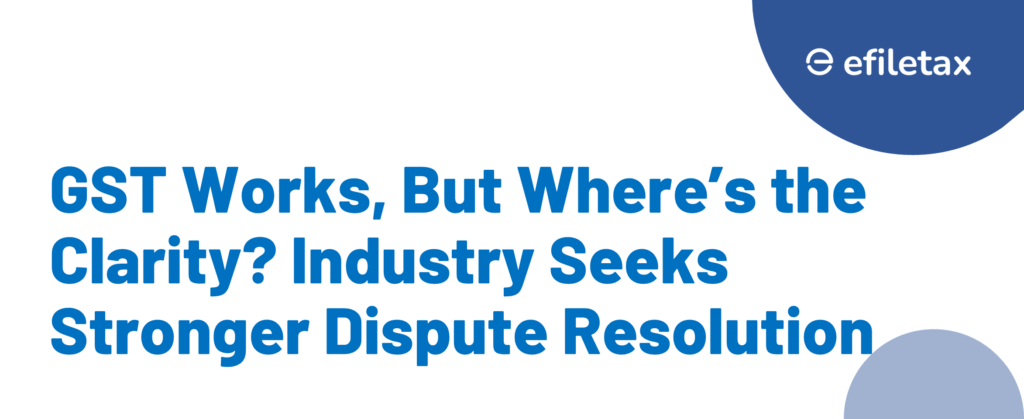
GST Beneficial But Clarity Needed: What Indian Businesses Want Now
The focus keyphrase “GST beneficial but clarity needed” reflects a major industry concern highlighted in a recent feedback-based report. While businesses across sectors acknowledge the gains of GST in unifying India’s indirect tax structure, they’ve also raised concerns over complexity, litigation, and compliance hurdles.
Let’s break down the key takeaways and what it means for taxpayers and consultants.
GST Impact: What Industry Says
A recent report by PHD Chamber of Commerce and Industry, shared after the 53rd GST Council Meeting, collected feedback from MSMEs, large enterprises, and consultants across India. Here’s what they said:
Key Positives
- Ease of doing business: Single registration across India has simplified entry into new states.
- Digitisation: GSTN portal and e-invoicing have made compliance more tech-enabled.
- Elimination of cascading taxes: Seamless input tax credit has reduced overall tax costs.
- Greater formalisation: More businesses now prefer to register and comply, especially post e-way bill and e-invoice enforcement.
Pain Points
Despite the above, “GST beneficial but clarity needed” emerged as the central theme. Key challenges include:
- Frequent changes in law and rates
- Poorly worded notifications and circulars
- Delays in appellate relief and advance rulings
- GST refund delays, especially in exports and inverted duty structures
- Mismatch issues in GSTR-2A/2B vs. GSTR-3B filings
- Tax notices even for minor mismatches
Key Demands by Industry
1. Stronger Dispute Resolution System
- GSTAT rollout: Industry wants urgent operationalisation of the Goods and Services Tax Appellate Tribunal (GSTAT).
- Legal note: Sections 109–114 of the CGST Act and the newly notified GSTAT (Procedure) Rules, 2024 provide the legal foundation.
- Expert View: Until GSTAT is operational, taxpayers face long delays in getting relief from disputed demands.
2. Clarity in Notifications and Circulars
- CBIC should pre-test new rules with industry before implementation.
- Suggested: Simplified language in circulars with visual examples.
- Case Example: Circular No. 181/13/2022-GST caused confusion in the edible oil and coal sectors due to retrospective refund denial – later challenged in courts.
3. Rationalisation of Tax Rates
- Reduce slabs from current 5, 12, 18, and 28% to 2–3 clear categories.
- Example: Restaurant services in high-end hotels still attract 18% without ITC—leads to uneven playing field.
4. Faster Refund Mechanism
- Introduce auto-refund for eligible cases where GSTR filings are matched.
- Plug delays in inverted duty refund and SEZ refunds.
- Legal support: Section 54 of CGST Act + recent Delhi HC rulings favour quicker timelines.
5. Input Tax Credit (ITC) Simplification
- One of the top pain points, especially due to mismatches.
- Suggested fix:
- Allow ITC if invoice is reflected in GSTR-2B, irrespective of minor errors.
- Introduce auto-reconciliation tools on the GSTN portal.
Comparison Table: What GST Promised vs. Industry Reality
| Parameter | GST Promise | Industry Reality |
|---|---|---|
| Tax simplification | One Nation, One Tax | Still multiple slabs, rate confusion |
| Compliance efficiency | Single portal, single return | GSTR-1, GSTR-3B, 2A/2B mismatch issues |
| Dispute resolution | Faster grievance redressal | GSTAT not yet operational |
| Input tax credit (ITC) | Seamless credit flow | Suspended due to minor errors or vendor faults |
| Refunds | Timely release for exporters | Frequent delays, scrutiny |
Expert Tip: Prepare Early For GST Audits
Chartered Accountant K. Srinivas, a GST advisor to mid-size exporters, suggests:
“Start reconciling monthly 2B vs 3B from April itself. Keep track of any blocked credits. Most notices arise from year-end mismatches or last-minute rectifications. A good audit trail helps in dispute defence.”
Summary Snippet for Google
GST beneficial but clarity needed, says industry. Key asks include GSTAT setup, rate rationalisation, faster refunds, and ITC reform.
FAQs
Q1. What is the GSTAT and why is it important?
The Goods and Services Tax Appellate Tribunal (GSTAT) is a quasi-judicial body for resolving GST disputes. Without it, taxpayers are forced to approach High Courts, causing delays and rising litigation.
Q2. Why is there a demand for fewer GST slabs?
Multiple slabs create classification disputes. Fewer slabs = better compliance and less litigation.
Q3. How can ITC issues be reduced?
Ensure vendor compliance, match invoices with GSTR-2B monthly, and raise alerts for mismatches proactively.
Final Thoughts
The message is clear – GST is here to stay, and industry sees its long-term value. But if India wants to scale its compliance ecosystem, it must address practical roadblocks.
✅ Want help filing GST returns or handling GST notices?
📲 Connect with Efiletax — your trusted compliance partner.
Explore GST Services »